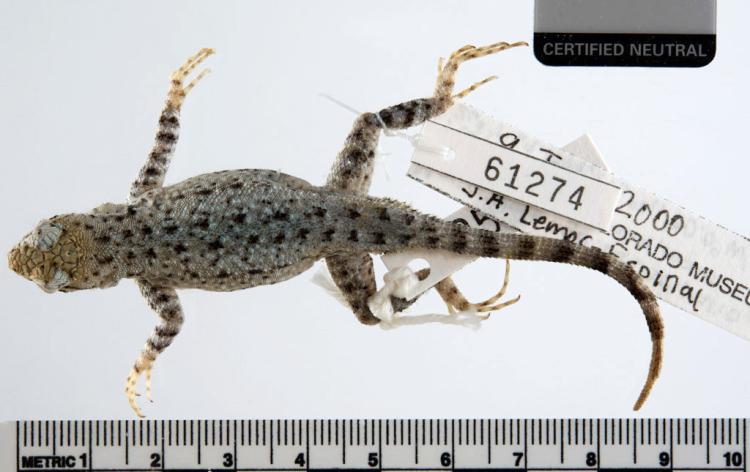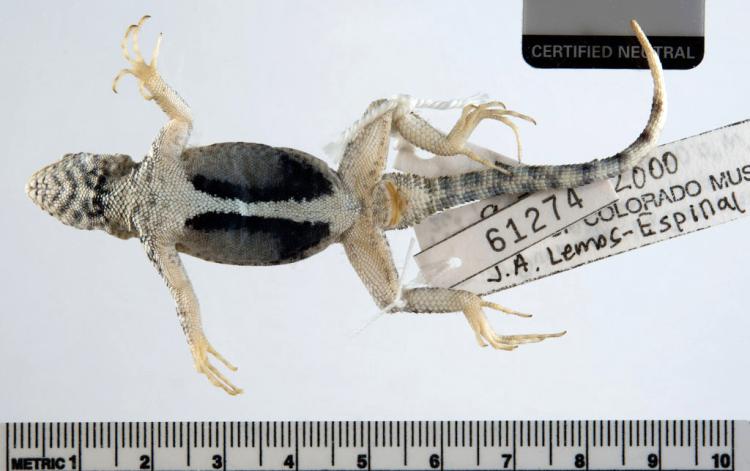The CU Museum is closed we will be opening early in the spring semester.
During this time, collection visits will be available by appointment and other special access requests will be considered on a case-by-case basis.
Please email cumuseum@colorado.edu for more information.
Ballinger’s Canyon Lizard


While the canyon lizard (Sceloporus merriami) was first described in 1904, it was not until 2001 that the Ballinger’s subspecies was discovered (Sceloporus merriami ballingeri). Prior to this, scientists had identified four subspecies of canyon lizard throughout the decades, but between 2000-2003, three other subspecies were named and added to the roster by past CU faculty and affiliates, Julio A. Lemos-Espinal, Hobart Smith and David Chizar.
Within taxonomic organization, a subspecies is a designation below the species rank that denotes a subgroup with tightly overlapping traits. Usually subspecies represent a geographically isolated population where distance or a physical barrier like a water body or mountain range has splintered off a subset of individuals within a species range, causing them to eventually develop distinct genetic traits from the main population. Often these are subtle, slight variations in color or patterning, size, or scale anatomy and number. In the case of Ballinger’s canyon lizard, throat markings, belly patch size, the shape of spots along the back, and bands on the underside of the tail set this lizard apart from other canyon lizards, all these traits of course, shaped by its distinct DNA blueprint.

